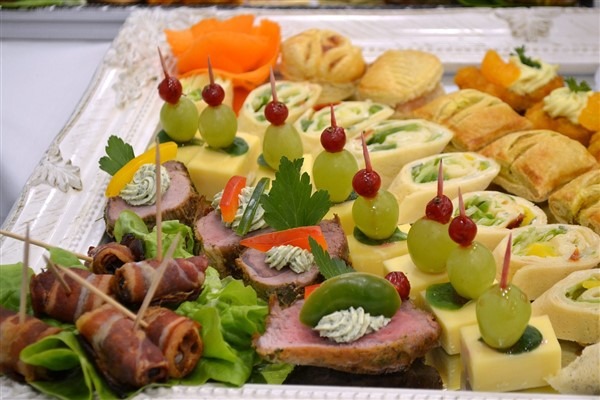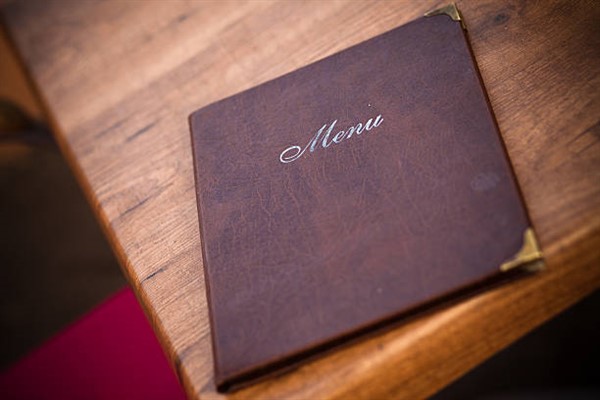Introduction
Food and travel go hand in hand, transcending boundaries and bringing people closer to the heart of a culture. Whether you’re exploring the bustling streets of Bangkok, savouring pasta in Rome, or enjoying sushi in Tokyo, dining is an integral part of the journey. To truly immerse yourself in these experiences, it’s essential to understand the local customs and etiquette, starting with a simple but powerful gesture: asking for the menu in the native language. In this article, we’ll explore the benefits of learning this request, provide essential phrases, and take you on a linguistic and culinary journey around the world.
Benefits of Learning to Ask for the Menu in Different Languages
Breaking Down Language Barriers: While English is often spoken in tourist areas, making an effort to speak the local language can bridge cultural gaps and create meaningful connections.
Enhancing Cultural Appreciation: Understanding how to request a menu in the local language is a sign of respect and an excellent way to show appreciation for the culture.
Creating Positive Dining Experiences Abroad: When you communicate with locals in their language, you’re more likely to receive personalized recommendations and warm hospitality.
Personal and Professional Growth: Learning a new language, even just a few phrases, broadens your horizons and can be an invaluable skill for both personal and professional development.
Essential Phrases for Requesting the Menu
To start your journey, let’s look at some common words and phrases for requesting the menu:
- “Menu”: A widely understood term, often used as-is in many languages.
- “Carta” (Spanish and Italian)
- “Speisekarte” (German)
- “Меню” (Russian)
- “メニュー” (Japanese)
- “菜单” (Chinese)
Politeness is key in many cultures, so don’t forget to include phrases like “please” and “thank you”:
- “Menu, please.”
- “La carta, por favor.” (Spanish)
- “Die Speisekarte, bitte.” (German)
- “Меню, пожалуйста.” (Russian)
- “メニュー、お願いします。” (Japanese)
- “菜单,请。” (Chinese)
Remember that pronunciation matters. While locals appreciate your effort, striving for accurate pronunciation shows respect and often leads to smoother interactions.

How to Ask for the Menu in 100 Different Languages
Now, let’s embark on a linguistic adventure around the globe. We’ve compiled a list of 100 different languages, along with their phonetic pronunciation, to help you confidently ask for the menu in diverse parts of the world.
- Afrikaans: “Koskaart, asseblief.”
- Albanian: “Karta e ushqimit, ju lutem.”
- Amharic: “ምናሌ, እባክዎን” (Menale, ebbakwon)
- Arabic: “قائمة الطعام، من فضلك” (Qa’imatu at-ta’am, min fadlik)
- Armenian: “Ճաշացանկ, խնդրում եմ” (Chashatsank, khndrum em)
- Azerbaijani: “Menyu, xahiş edirəm.”
- Basque: “Menua, mesedez.”
- Belarusian: “Меню, калі ласка” (Menyu, kali laska)
- Bengali: “মেনু, দয়া করে” (Menu, doya kore)
- Bosnian: “Meni, molim.”
- Bulgarian: “Меню, моля” (Menu, molya)
- Burmese: “မီနူ, ကျေးဇူးပါ” (Menu, kyeizuupya)
- Catalan: “Carta, si us plau.”
- Cebuano: “Menu, palihug.”
- Chichewa: “Menu, chonde.”
- Chinese (Simplified): “菜单, 请” (Càidān, qǐng)
- Chinese (Traditional): “菜單, 請” (Càidān, qǐng)
- Croatian: “Meni, molim.”
- Czech: “Jídelní lístek, prosím.”
- Danish: “Menukort, tak.”
- Dutch: “Menu, alsjeblieft.”
- Esperanto: “Menuo, bonvolu.”
- Estonian: “Menüü, palun.”
- Filipino: “Menu, pakiusap.”
- Finnish: “Menu, kiitos.”
- French: “La carte, s’il vous plaît.”
- Frisian: “Menu, astublief.”
- Galician: “Carta, por favor.”
- Georgian: “მენიუ, გთხოვთ” (Meniu, gtxovt)
- German: “Menü, bitte.”
- Greek: “Μενού, παρακαλώ” (Menú, parakaló)
- Gujarati: “મેનૂ, કૃપા કરીને” (Menū, kṛpā karīne)
- Haitian Creole: “Meni, tanpri.”
- Hausa: “Menu, da albarka.”
- Hebrew: “תפריט, בבקשה” (Tafrit, bevakasha)
- Hindi: “मेन्यू, कृपया” (Menyū, kṛpayā)
- Hmong: “Thiab cov menyu, thov.”
- Hungarian: “Étlap, kérem.”
- Icelandic: “Matseðill, viltu svo vel.”
- Igbo: “Menu, biko.”
- Indonesian: “Menu, silakan.”
- Irish: “Bille, le do thoil.”
- Italian: “Il menù, per favore.”
- Japanese: “メニュー, お願いします” (Menyū, onegaishimasu)
- Javanese: “Menu, monggo.”
- Kannada: “ಮೆನು, ದಯವಿಟ್ಟು” (Menu, dayaviṭṭu)
- Kazakh: “Меню, рахмет” (Menıw, rahmet)
- Khmer: “ម៉ឺនុយ, សូម” (Menou, som)
- Kinyarwanda: “Menu, kubanjye.”
- Korean: “메뉴, 주세요” (Menyu, juseyo)
- Kurdish (Kurmanji): “Menû, ji kerema xwe re.”
- Kyrgyz: “Меню, рахмат” (Menyu, rahmat)
- Lao: “ເມນູ, ກະລຸນາ” (Menu, kaluna)
- Latin: “Cibus, quaeso.”
- Latvian: “Ēdienkarte, lūdzu.”
- Lithuanian: “Meniu, prašau.”
- Luxembourgish: “Speiseskàart, w.e.g.”
- Macedonian: “Мени, ве молам” (Meni, ve molam)
- Malagasy: “Menio, azafady.”
- Malay: “Menu, sila.”
- Malayalam: “മെനു, ദയവായി” (Menu, dayavāyi)
- Maltese: “Menu, jekk jogħġbok.”
- Maori: “Tuhinga kai, whakarongo mai.”
- Marathi: “मेनू, कृपया” (Menū, kṛpayā)
- Mongolian: “Меню, баярлалаа” (Menyu, bayarlalaa)
- Myanmar (Burmese): “မီနူ, ကျေးဇူးပါ” (Menu, kyeizuupya)
- Nepali: “मेनु, कृपया” (Menu, kṛpaya)
- Norwegian: “Meny, vær så snill.”
- Pashto: “مینو, برېښنالیکه” (Menu, brēṣnālika)
- Persian (Farsi): “منو, لطفا” (Menu, lotfan)
- Polish: “Menu, proszę.”
- Portuguese: “Menu, por favor.”
- Punjabi: “ਮੀਨੂ, ਕਿਰਪਾ ਕਰਕੇ” (Mīnū, kirapā karake)
- Romanian: “Meniu, vă rog.”
- Russian: “Меню, пожалуйста” (Menyu, pozhaluysta)
- Samoan: “Meaai, faamolemole.”
- Scots Gaelic: “Clàr bìdh, mas e do thoil e.”
- Serbian: “Мени, молим вас” (Meni, molim vas)
- Sesotho: “Menu, hape.”
- Shona: “Menu, kucherechedzwa.”
- Sindhi: “مینيو, مهرباني ڪري” (Menu, mehrbani kari)
- Sinhala: “මෙනු, කරුණු” (Menu, karunu)
- Slovak: “Jedálny lístok, prosím.”
- Slovenian: “Meni, prosim.”
- Somali: “Menu, fadlan.”
- Spanish: “La carta, por favor.”
- Sundanese: “Menu, monggo.”
- Swahili: “Menyu, tafadhali.”
- Swedish: “Meny, tack.”
- Tajik: “Меню, лутфан” (Menyu, lutfan)
- Tamil: “மெனு, சந்தேகம்” (Menu, sandhēkam)
- Telugu: “మెనూ, దయచేసి” (Menu, dayacēsi)
- Thai: “เมนู, โปรด” (Menoo, prôd)
- Turkish: “Menü, lütfen.”
- Ukrainian: “Меню, будь ласка” (Menyu, budʹ laska)
- Urdu: “مینو, براہ کرم” (Meenu, barah karam)
- Uzbek: “Menyu, iltimos.”
- Vietnamese: “Thực đơn, xin vui lòng.”
- Welsh: “Dewislen, os gwelwch yn dda.”
- Yiddish: “קאַרטע, ביטע” (Karte, bite)
Please note that pronunciation may vary within regions and accents. It’s always a good idea to practice and refine your pronunciation when learning these phrases.

Fun Facts and Anecdotes
Learning to ask for the menu isn’t just about the words; it’s also about understanding cultural nuances. In Japan, for instance, it’s common to receive a menu automatically upon entering a restaurant, but you can use “メニューお願いします” (Menyū onegaishimasu) to politely request it if needed.
Practical Tips for Language Learning
To embark on your linguistic journey, consider using language learning apps. Engaging with native speakers through language exchange programs can be incredibly helpful for mastering pronunciation and gaining cultural insights.
Common Challenges and How to Overcome Them
While asking for the menu is a simple phrase, it’s not without its challenges:
- Language variations within countries: Some countries have multiple official languages or dialects. Research the specific region you’re visiting.
- Pronunciation difficulties: Learning proper pronunciation is essential for effective communication. Practice regularly and seek feedback.
- Dealing with regional dialects: Be prepared for variations in language within a country. Locals will appreciate your effort, even if you don’t speak the local dialect.
- Misunderstandings and politeness: Pay attention to cultural norms regarding politeness, as this can vary widely.
The Importance of Cultural Sensitivity
As you embark on this linguistic journey, remember to respect local customs and etiquette. Understanding how to ask for the menu is just one piece of the cultural puzzle. Always be polite, patient, and open to learning more about the culture you’re experiencing.
Encouraging Culinary Exploration
Learning how to ask for the menu in different languages is not only practical but also a gateway to culinary exploration. It can encourage you to try local specialities, engage with locals, and create lasting memories through food.
Conclusion
In this ever-shrinking world, being able to communicate across cultures is a valuable skill. Learning how to ask for the menu in different languages is a small yet significant step in bridging cultural gaps and creating memorable dining experiences. So, as you plan your next adventure, don’t forget to add “menu, please” to your language arsenal. Your taste buds and travel experiences will thank you.













